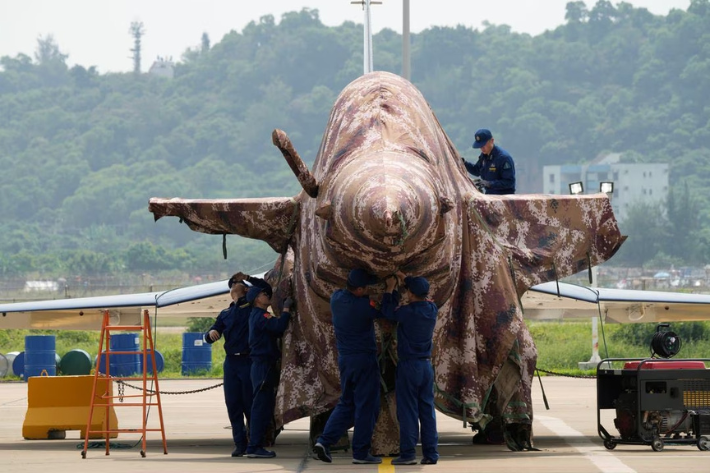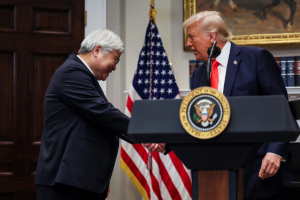China will boost defence spending by 7.2% this year, faster than the government’s modest economic growth forecast, the country’s budget showed.
China’s national budget released on Sunday showed 1.55 trillion yuan ($224 billion) allocated to military spending. It marks China’s eighth consecutive annual single-digit increase in defence spending.
The hike, slightly higher than last year’s, comes as Chinese Premier Li Keqiang called for the armed forces to boost combat preparedness and capacity.
Also on AF: Billionaire Investor Mobius ‘Can’t Get His Money Out of China’
“Our armed forces, with a focus on the goals for the centenary of the People’s Liberation Army in 2027, should work to carry out military operations, boost combat preparedness and enhance military capabilities,” Keqiang said in the state-of-the-nation address on Sunday.
This spending will outpace Beijing’s targeted economic growth of around 5%, which is slightly below last year’s target.
Defence spending outpacing the economic growth forecast showed China anticipates facing greater pressures in its external security environment, especially from the United States and on the Taiwan issue, said Li Mingjiang, associate professor at S Rajaratnam School of International Studies in Singapore.
“Chinese leaders are clearly intensifying efforts to prepare the country militarily to meet all potential security challenges, including unexpected situations,” he said.
China, with the world’s largest military in terms of personnel, is busy adding a slew of new hardware, including aircraft carriers and stealth fighters.
Nuclear, submarines likely focus
Takashi Kawakami, a professor of Takushoku University in Tokyo, said China would probably give priority to its nuclear capability.
“As China strengthens the new area of cognitive warfare over Taiwan, I think it will also use the budget to build up its cyber and space capabilities, as well as its submarine forces to target undersea cables,” he said.
China’s neighbours and the United States are closely watching the national budget, concerned by Beijing’s strategic intentions and development of its military.
Concerns around China’s defence spending also follow Beijing’s growing aggression towards Taiwan. The island warned on Monday it needs to be on alert this year for a “sudden entry” by the Chinese military into areas close to its territory.
That followed Chinese Premier Li Keqiang pledging “peaceful reunification” with Taiwan on Sunday, at the opening of the annual meeting of China’s parliament.
Closing gap with US
Beijing is nervous about challenges on fronts ranging from Chinese-claimed Taiwan to US naval and air missions in the disputed South China Sea near Chinese-occupied islands.
It says the military spending for defensive purposes is a comparatively low percentage of its GDP and that critics want to demonise it as a threat to world peace.
China’s reported defence budget in 2023 is around one quarter of proposed US spending, though many diplomats and foreign experts believe Beijing under-reports the real number.
China has long argued that it needs to close the gap with the United States. China, for example, has three aircraft carriers, compared with 11 in active service for the United States.
The Ukraine war has prompted some elements in China’s military-industrial complex to call for an increase in the defence budget.
An article published last October in the official journal of the State Administration of Science, Technology and Industry for National Defence, a central government ministry responsible for wartime logistics, recommended an increase in the military budget given surges in defence spending from NATO member-states besides the United States.
“This matter is not about participating in the international arms race, but defending our national security,” it said.
- Reuters, with additional editing by Vishakha Saxena
Also read:
Money Alone Can’t Rescue China’s Chip Sector, Experts Say
China Sets 5% Growth Target as National Congress Begins
Chip Executives Replace Pony Ma, Jack Ma at Key China Meet
China’s Low-Earth Satellites Push in Starlink Catch-Up Bid
























